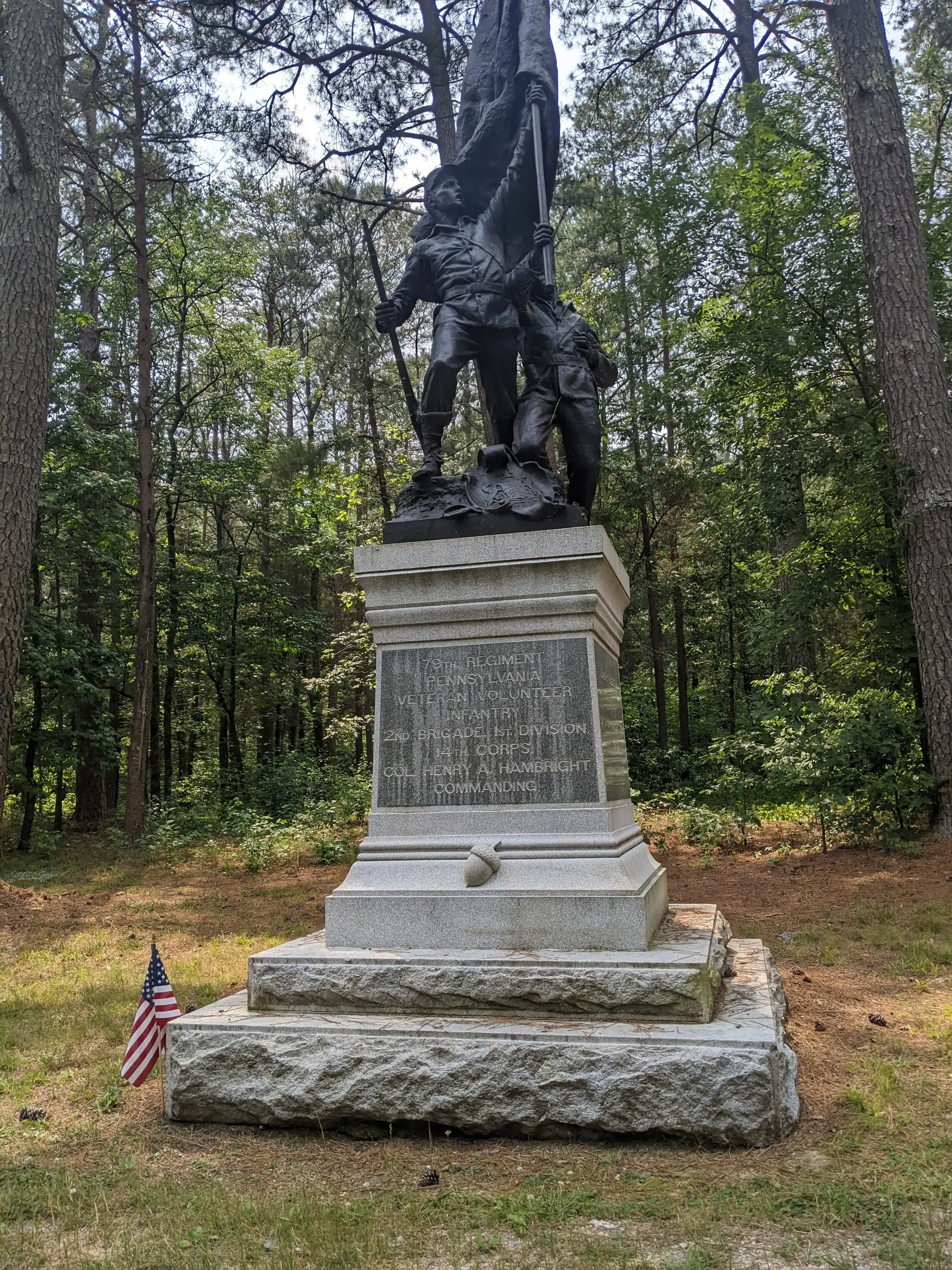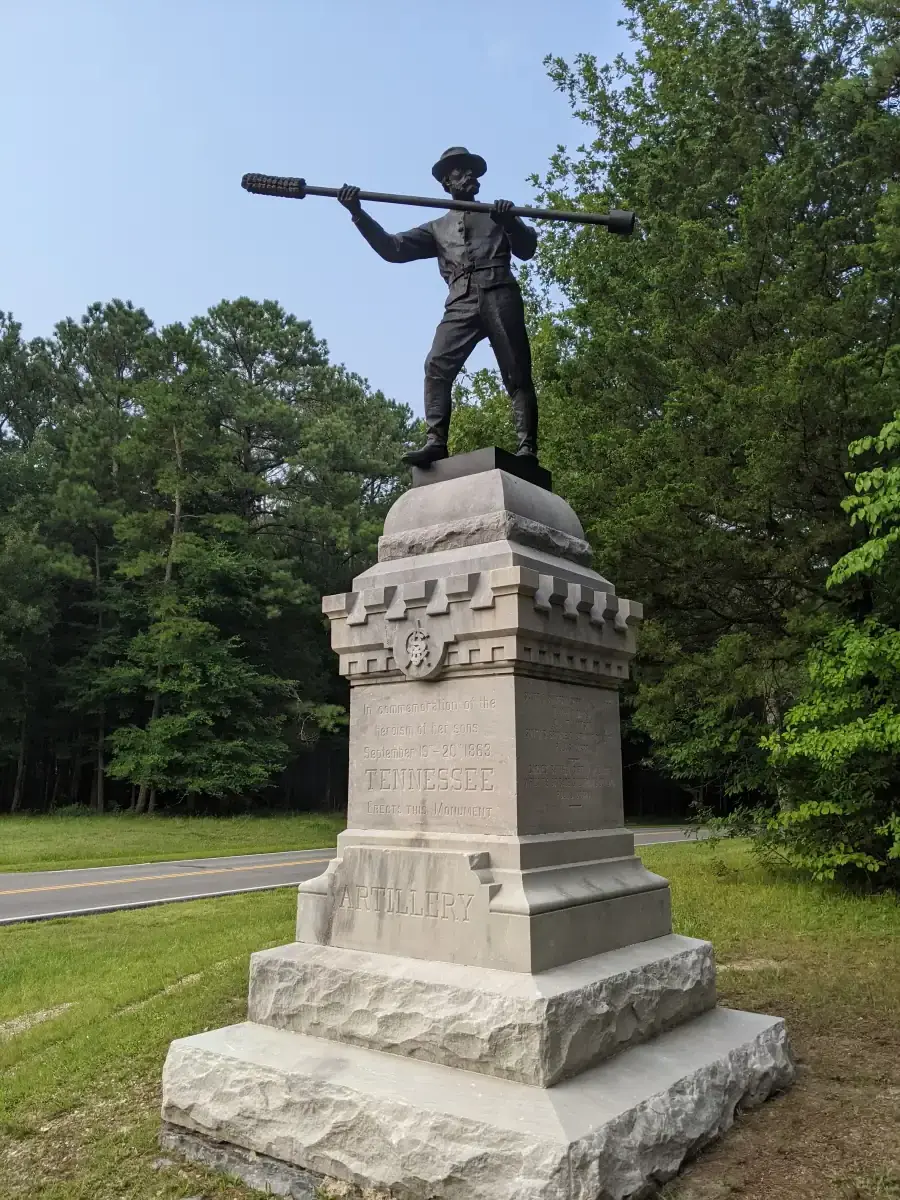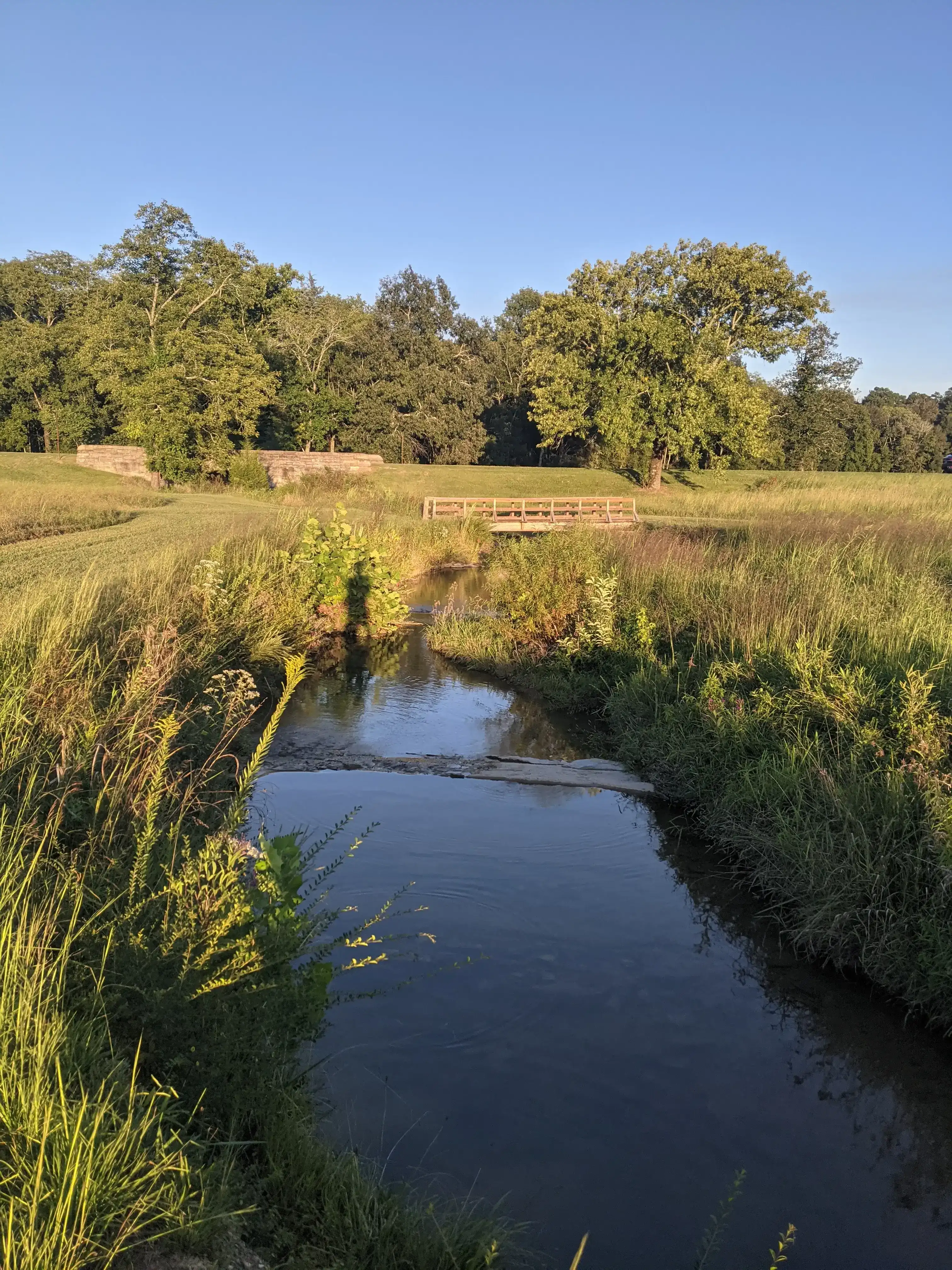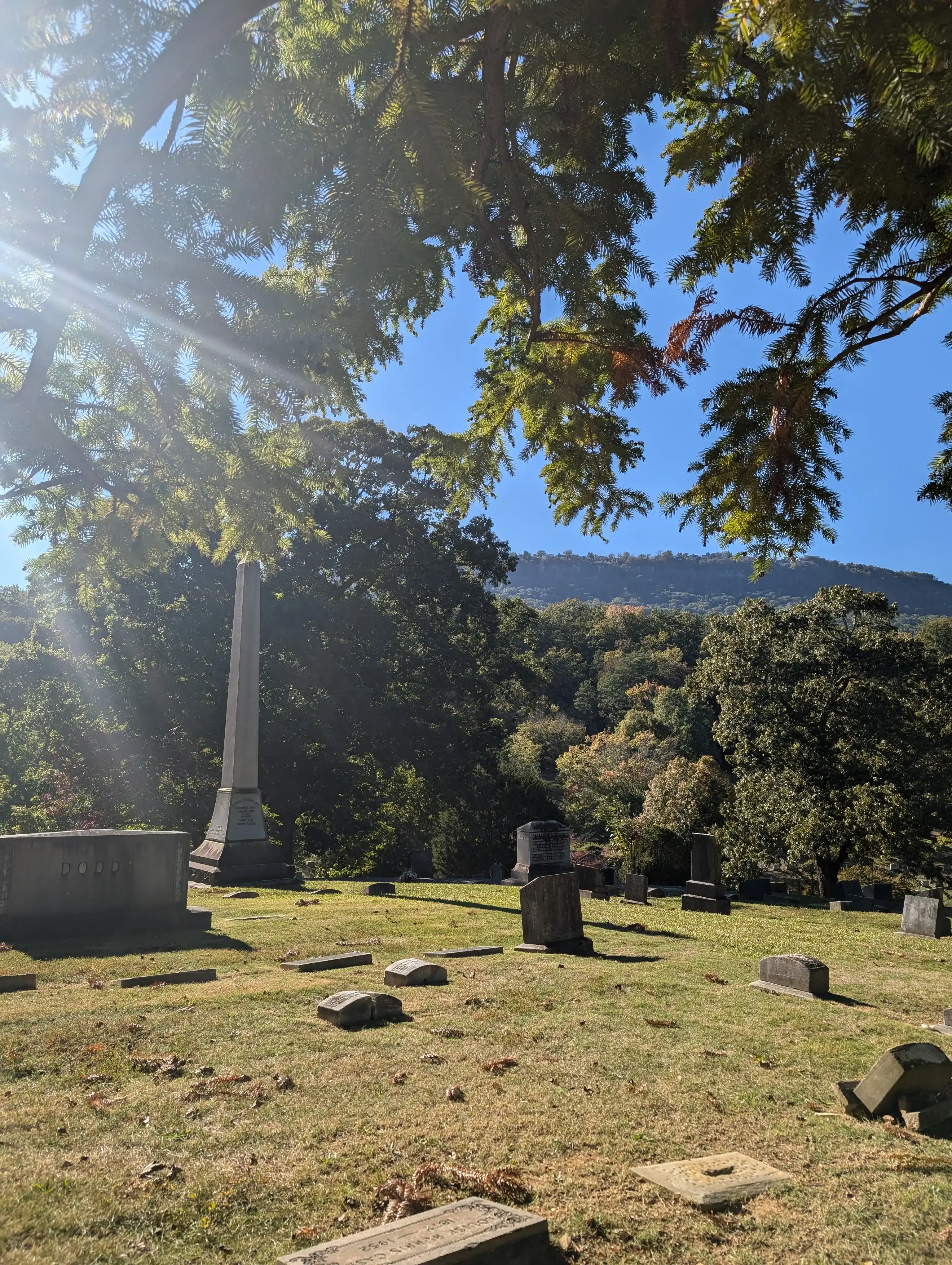
Chattanooga and the surrounding area are deeply rooted in civil war history. The cities two largest and most storied events were the Battles of Chickamauga and the Chattanooga Campaign, five separate but related battles.
The steep and rocky terrain of the region had a major influencer in both events, with thick forests difficult maneuver through and mountain ridges serving as premiere defense positions.
Historic sites and battlefields exist today as national landmarks filled with history stations and larger exhibits. Some as a member of the National Parks Service, giving us the opportunity to walk the same ground where tens of thousands of soldiers (at the time the US population wad ~31 million) once fought for control of this country.
The Battle of Chickamauga is on record as the second most deadly battle of the Civil War after the Battle of Gettysburg. The Union victory here was a turning point in the civil war as Chattanooga was a major transportation hub referred to as the “Gateway to the South”. It gave The Union control of the supply routes and allowed troops to move effectively into the heart of the confederacy.
Battle of Chickamauga.
Previously mentioned as the second most deadly battle during the American Civil War. This battle was a major victory for the confederate army as the Union had been winning battles and advancing further south.
This battle was initiated by the Union forces under leadership of Major General William Rosecrans following his victory of the Tullahoma Campaign in Murfreesboro, Tennessee. Confederate leadership was provided by General Braxton Bragg.
During the attack a series of miscommunications by Union leadership opened a gap in their defensive lines which the confederate army exploited, causing the Union to retreat to Chattanooga (after significant casualties). This set the stage for the Chattanooga Campaign.

Chattanooga Campaign.
The Chattanooga Campaign is an umbrella title composed of five separate battles (summarized below) that occurred in Chattanooga from October-November 1863 following the Battle of Chickamauga.
After the Union defeat the Union army sent significant reinforcements to Chattanooga to help with their mission. Ultimately the Union forces were victorious during the Chattanooga Campaign, a significant victory that opened the door for further advancement south of Union troops.
This victory opened up transportation routes for much needed ammunition, food, and reinforcement troops. Before this confederate forces were able to stalk and raid Union supply wagons with views from atop Lookout Mountain.
Following the recon Union soldiers overtook Orchard Knob swiftly with limited casualties on both sides. Orchard Knob became Grant and Thomas’s headquarters for the rest of the battles.
This battle secured the Confederate left flank and forced them to abandon Lookout Mountain. It gave the Union control over a critical position overlooking Chattanooga.
The victory ended Confederate control of Chattanooga and opened the path for the Union forces Atlanta Campaign.
What follows below are the major historical sites, parks, and exhibits that remain to this day. These sites can be visited during their operating hours, please check online for updated hours of operation.
Chickamauga and Chattanooga National Military Park.
The first, and also largest, of four national military parks. Spanning 9,532 acres in total, the park consists of four different sections.
It should be noted up front that the sections of the park are not interconnected. To see the entire park, you would have to drive to each section.
Each section should be no more than a 20 minute drive from one another.
The park is dedicated to the various areas of Chattanooga and North Georgia where the Civil War had its greatest impact. Many of the park sections provide a self guided (through the National Park Service app) or guided walking tours.
Chickamauga Battlefield contains roughly 50 miles of hiking trails. Many of these trails follow the roads set up by the military and in present day they are accompanied by the various historical monuments, some which have been posted here. If you’ve already covered all 50 miles of trail, check out our guide on Cloudland Canyon State Park for more hikes nearby.
The first on the list is the largest section of the park, about 5300 acres. If you’re driving through during visitors center hours, they have a great museum and staff to help with all your questions.
In this park you can take a driving or guided tour of the various Civil War points of interest. The self guided driving tour can be accessed through the National Park Service app on your phone.
At the various tour stops you’ll encounter monuments dedicated to various events, war heroes, and those defeated.
The largest is The Wilder Brigade Monument, standing at 85 feet tall, it’s a tower that overlooks the south end of the Battlefield. The tower is open to visitors seasonally (spring, summer and fall) and weather permitting.
You’ll see a number of hikers, bikers, and even horseback riders throughout the park so be careful on your driving tour.
The Lookout Mountain Battlefield is the second significant section of the park composed of ~3000 acres of land.
The park does have a $10 entry fee, children under 16 are welcome for free. This park is in dedication to the significance of Lookout Mountain during the Civil War including the Battle of Lookout Mountain aka “The Battle Above the Clouds”.
If you’re visiting for more than a couple of hours consider doing a hike, Lookout Mountain has more than 30 miles of trails to it’s name, a map of them can be found here. Multiple park points of interest follow.
Enter Point Park through iconic castle-like towers.
In the park you’ll find 10 acres of monuments and dedications mainly in the form of civil war cannons and information plaques, but most notably the New York Peace Monument which was gifted from New York as a peace offering following the war.
The park offers panoramic views of the city and the Tennessee River, making it a popular spot for sightseers and photographers. Civil War cannons, and informative plaques detailing the area’s history.
This is an interesting house from the point of view of the family which resided as well as the war more generally.
Robert Craven was an iron master, somewhat wealthy for his time, who originally built this six bedroom house for his family.
As the war ensued it became a shelter for Confederate generals, while the militiamen would sleep in tents outside on the property. The Craven’s stuck around with war encircling them for a period of time but following the Battle of Lookout Mountain, which in part took place on their property, they decided to leave.
The Union forces used the house after the battle. Once the war ended the Craven’s came back and Robert built the house again from scratch. What remains now is rebuilt home made to resemble the appearance of the house post war.

Smaller Historical Sites.
From the Bragg Reservation, he directed Confederate defenses during the Battle of Missionary Ridge, the battle that ultimately led to the Union’s victory in Chattanooga. Visitors to the site can explore the preserved monuments, providing insight into the battlefield’s historical significance.
The elevation of Orchard Knob gave Union forces a clearer vantage point, allowing Grant to observe Confederate movements and more effectively strategize his attacks. Today, the site showcases several significant historical monuments that memorialize the pivotal decisions made here during the Chattanooga Campaign.

Located in Missionary Ridge, this cemetery was established in 1863 during the Civil War by Union General George H Thomas following the Battle of Chattanooga. It was initially going to be a burrial ground for Union soldiers exclusively but later expanded to include veterans of future wars. Thousands of Union soldiers are buried here and a small number of Confederate soldiers as well.
Among those buried here are Medal of Honor recipients and soldiers from every major American conflict since the Civil War, making this a site of true historical significance. The cemetery’s landscape of iconic rows of white headstones, gives us a reminder of the sacrifices made throughout our short history.
Summary of Key Civil War Sites.
| Site | Historical Significance |
|---|---|
| Lookout Mountain | Site of the famous “Battle Above the Clouds” in 1863, where Union forces took control. |
| Chickamauga Battlefield | The bloodiest two-day battle of the Civil War, resulting in over 34,000 casualties. |
| Orchard Knob | Used by General Grant as a command post to observe the battles for Chattanooga. |
| Missionary Ridge | Key victory for Union forces, breaking Confederate defenses in Chattanooga. |

Closing Time.
Anyone with a deep interest in history knows Chattanooga has had some key moments in time in America’s short existence. I hope this Chattanooga Civil War overview offers some new facts / details for those both familiar and new to this history. I hope this guide inspires you to embark on a history adventure by exploring the Civil War landmarks noted throughout this guide. If I missed anything or something needs correcting, please email me at jack@thingshappening.com.